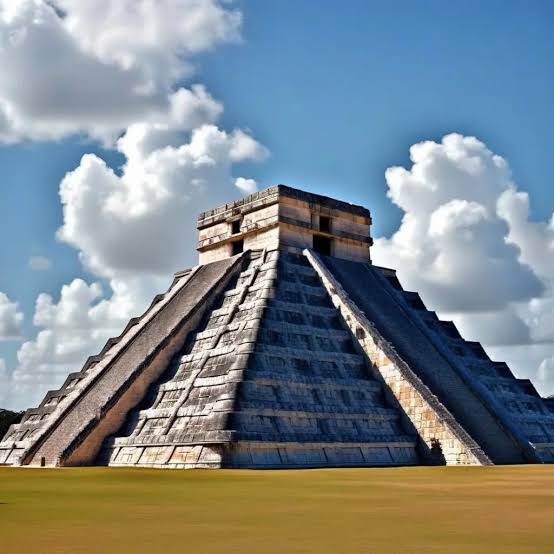A Journey Through Time:
The Most Famous Historical Landmarks Around the World
Humanity possesses a rich cultural heritage that reflects its ancient history through the ages. From ancient temples to lost cities, each archaeological site tells a unique story of the civilizations that flourished in the past. In this journey, we will explore some of the most famous historical landmarks around the world, attracting millions of visitors every year.
1. The Pyramids of Giza, Egypt

The Pyramids of Giza are among the most famous landmarks in the world. Built about 4,500 years ago, the three pyramids – Khufu, Khafre, and Menkaure – symbolize the grandeur and engineering achievements of ancient Egyptian civilization.


The Great Pyramid of Khufu is the only remaining wonder of the Seven Wonders of the Ancient World.
2. Petra, Jordan

The rose-red city of Petra, carved into the rocks, is one of the New Seven Wonders of the World. Petra was founded as the capital of the Nabataean Kingdom in the 4th century BC.


The iconic facade of the Treasury stands as a testament to the engineering and artistic skills of the Nabataean civilization.
3. Taj Mahal, India

The Taj Mahal is a stunning white marble mausoleum built in the 17th century by the Mughal Emperor Shah Jahan in memory of his wife Mumtaz Mahal.


This monument is a masterpiece of Islamic architecture in India, attracting visitors from around the world with its beauty and romantic history.
4. The Great Wall of China, China

The Great Wall of China stretches over 13,000 miles across northern China and is one of the greatest engineering feats in history. Built to protect the Chinese Empire from invasions, its construction began in the 7th century BC, with continuous additions until the 16th century.


5. Machu Picchu, Peru


Machu Picchu, located high in the Andes Mountains of Peru, is one of the most important archaeological sites of the Inca civilization. Discovered in 1911 by American explorer Hiram Bingham, the city is now a popular destination for history and nature enthusiasts alike.


6. The Acropolis, Greece


The Acropolis, located in the Greek capital Athens, is a symbol of ancient Greek civilization. It contains several ancient buildings, the most famous being the Parthenon, a temple dedicated to the goddess Athena, dating back to the 5th century BC.


7. The Colosseum, Italy


The Colosseum is an ancient Roman amphitheater located in the heart of Rome, built in the 1st century AD. It was used for gladiatorial contests and public spectacles and stands today as a symbol of the Roman Empire and a major tourist attraction.


Its true purpose remains a mystery, but it is believed to have been used as a religious or astronomical site.
8. Stonehenge, England


Stonehenge, prehistoric stone circle monument, cemetery, and archaeological site located on England. Though there is no definite evidence as to the intended purpose of Stonehenge, it was presumably a religious site and an expression of the power and wealth of the chieftains, aristocrats, and priests who had it built—many of whom were buried in the numerous barrows close by.

It was aligned on the Sun and possibly used for observing the Sun and Moon and working out the farming calendar. Or perhaps the site was dedicated to the world of the ancestors, separated from the world of the living, or was a healing centre.
9. Chichen Itza, Mexico


Chichen Itza is a Mayan archaeological site located in the Yucatán Peninsula, Mexico. The site is famous for the Pyramid of Kukulcan, also known as “El Castillo,” a massive temple reflecting the Mayans’ expertise in engineering and astronomy.

10. Karnak Temple, Egypt


The Karnak Temple, located in Luxor, is the largest ancient religious complex in the world. Built over thousands of years, it contains temples, pylons, and massive statues, showcasing the grandeur of ancient Egyptian civilization.


11. Angkor Wat, Cambodia


Angkor Wat is a massive temple complex located in northern Cambodia and is the largest religious monument in the world.


Built in the 12th century by Emperor Suryavarman II as a Hindu temple, it later became a Buddhist temple. Angkor Wat is renowned for its stunning architecture and intricate carvings depicting Hindu mythology.
12. The Alhambra Palace, Spain




13. The Forbidden City, China


Situated in the heart of Beijing, the Forbidden City was the imperial palace for Chinese emperors for over 500 years. It contains over 9,000 rooms and is a magnificent example of traditional Chinese architecture.


14. Pompeii, Italy


Pompeii is an ancient Roman city that was destroyed in 79 AD by the eruption of Mount Vesuvius. The city was buried under volcanic ash, preserving it remarkably well. Excavations in Pompeii provide a unique glimpse into daily life in the Roman Empire.


15. Timgad, Algeria


Timgad is a Roman archaeological site located in northeastern Algeria, founded in 100 AD by Emperor Trajan. Timgad is notable for its exceptional urban planning with streets laid out in a precise grid pattern and is one of the best-preserved examples of Roman city planning.


These historical landmarks contribute to enriching our understanding of different civilizations’ history and offer a deep insight into human achievements over time. Visiting these sites provides a unique opportunity to explore the past and draw inspiration and lessons from it.














Leave a comment